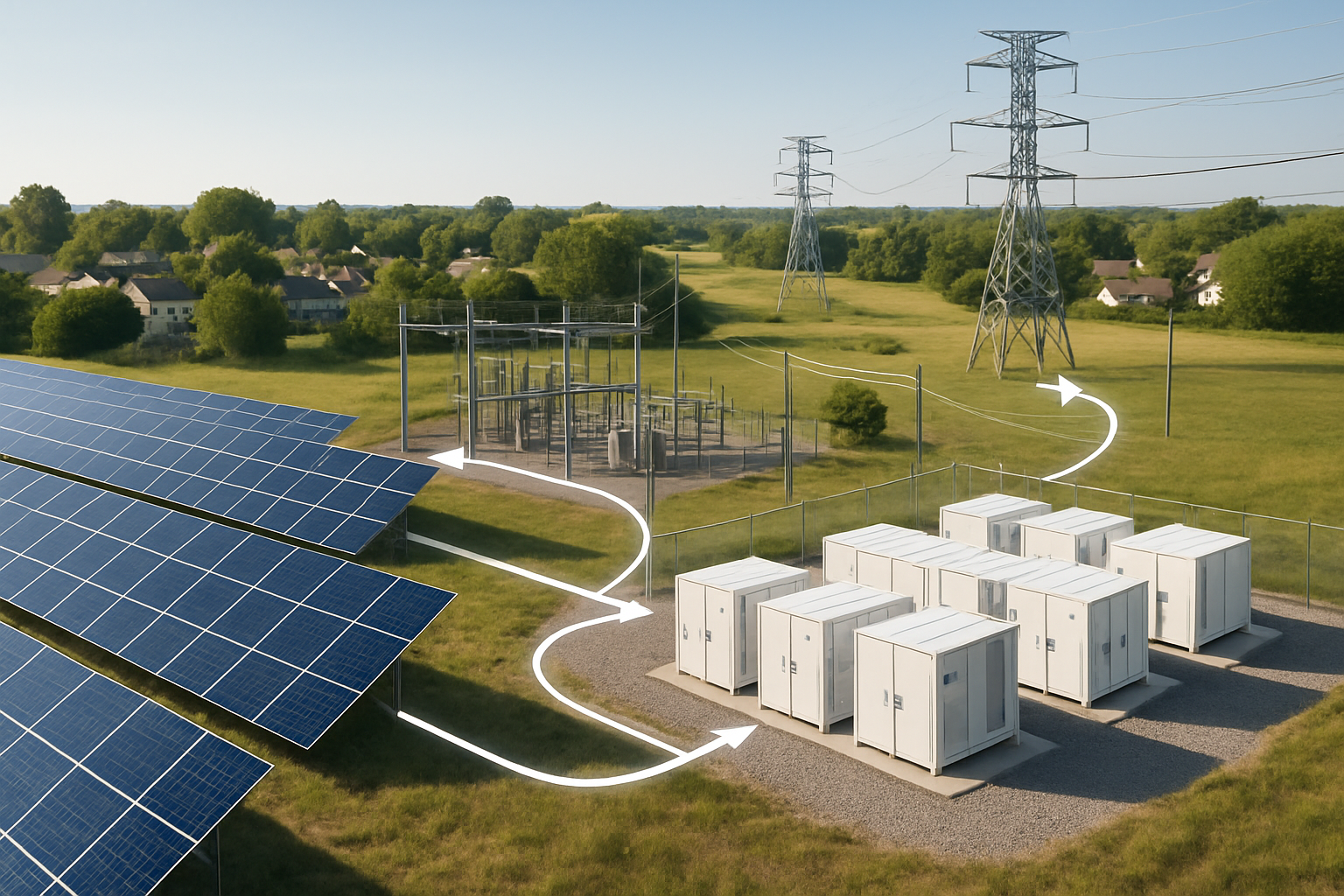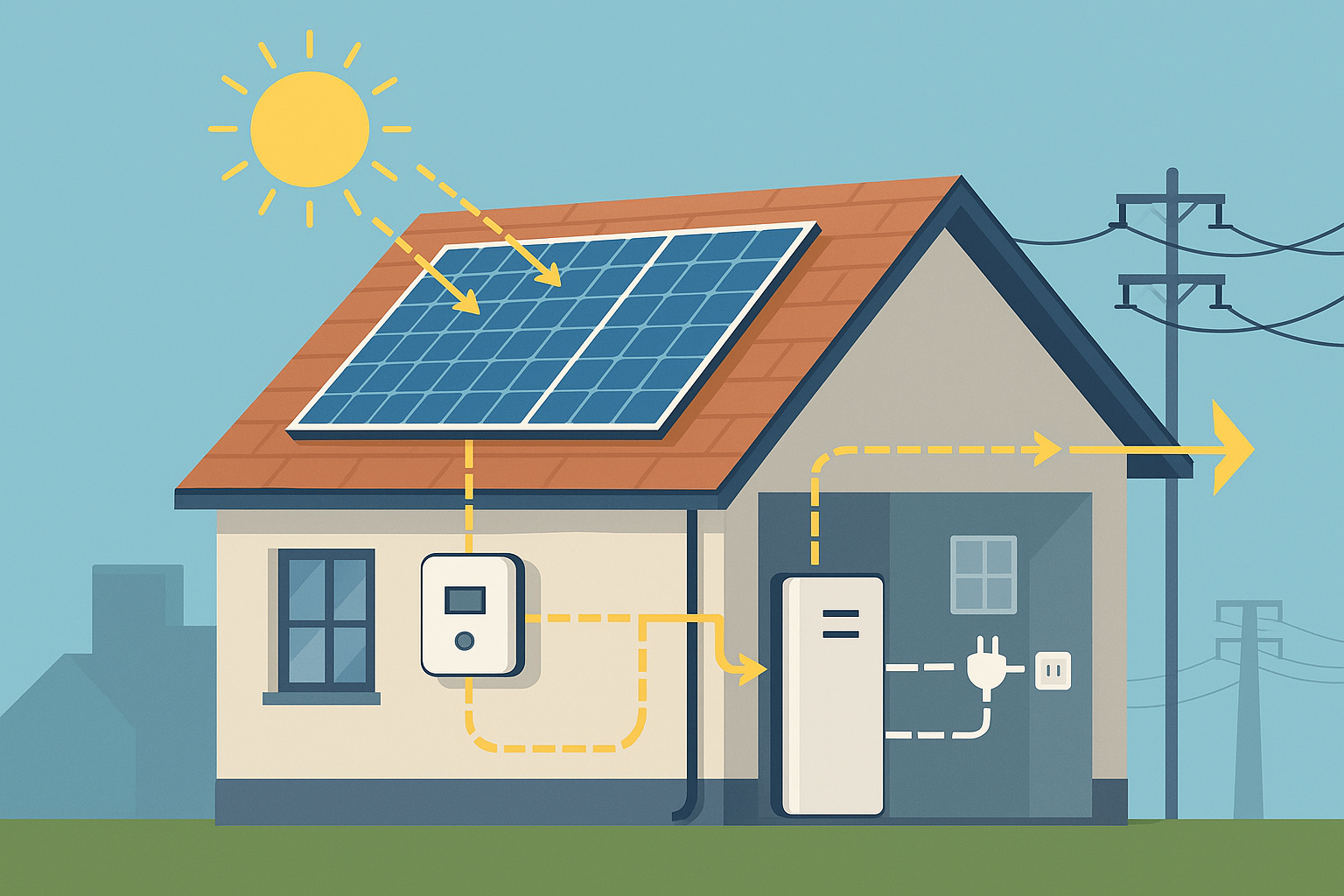When considering a solar energy system, a common question arises: should you prioritize the lowest upfront cost by opting for cheap solar panels, or invest in professional installation with potentially higher-quality components? The immediate price tag often tells only part of the story. The real winner in solar project economics is determined by the total system cost over its lifetime, encompassing efficiency, durability, and long-term energy production.
This discussion will guide you through the variables that influence solar project costs, helping you make an informed decision that aligns with your energy goals and financial expectations. You will gain insight into how site conditions, component quality, and local labor rates collectively shape the final investment and its returns.
Understanding Solar Project Cost Components
A solar energy system's price is not solely about the panels. It is a mosaic of various elements, each contributing to the overall expenditure and the system's eventual performance.
Hardware Expenses
- Solar Panels: These are often the most visible component. Their cost varies significantly based on efficiency, brand reputation, and warranty.
- Inverters: Essential for converting direct current (DC) electricity from panels into alternating current (AC) for your home or grid. Options include string inverters, microinverters, and hybrid inverters.
- Mounting Systems: Racks and hardware needed to secure panels to your roof or ground. Quality mounting ensures structural integrity and longevity.
- Wiring and Electrical Components: All the necessary cables, conduits, circuit breakers, and disconnects to safely connect the system.
- Energy Storage (Batteries): For those seeking energy independence or backup power, lithium iron phosphate (LiFePO4) batteries are a popular choice due to their performance and reliability. Integrating these can significantly enhance a system's value.
Soft Costs and Labor
- Permitting and Inspections: Local regulations require permits and inspections, adding to the administrative costs.
- Design and Engineering: Tailoring a system to your specific site, including roof angles, shading analysis, and energy needs.
- Installation Labor: The wages for skilled technicians and electricians who physically install the system. This often represents a substantial portion of the total cost.
- Customer Acquisition: Marketing, sales, and overheads for solar companies.
According to the U.S. Department of Energy, soft costs, which include labor, permitting, and customer acquisition, can account for a significant portion of the total solar project cost, sometimes even exceeding hardware costs.
The Appeal of Cheap Solar Panels
Opting for cheap solar panels can seem like a straightforward way to reduce the initial investment in a solar energy system. However, this approach carries specific implications for long-term performance and overall value.
Lower Upfront Cost
The primary advantage of cheap solar panels is their reduced purchase price. This can make solar energy appear more accessible to a wider range of budgets. For individuals or businesses with immediate budget constraints, this lower entry point can be appealing.
Potential Compromises
- Reduced Efficiency: Less expensive panels often have lower efficiency ratings. This means they convert less sunlight into electricity, requiring more panels to generate the same amount of power as higher-efficiency alternatives.
- Shorter Lifespan and Warranty: Cheaper panels may come with shorter product warranties or less robust performance guarantees. They might degrade faster, leading to lower energy output over time.
- Subpar Materials: The use of lower-grade materials in manufacturing can affect the panel's durability, making it more susceptible to environmental factors like extreme weather or temperature fluctuations.
- Limited Support: Manufacturers of cheap panels might offer less comprehensive customer support or have a less established track record for reliability.
The Value of Professional Installation
Investing in professional solar installation is about more than just putting panels on a roof; it is about ensuring the system's optimal performance, safety, and longevity. This approach prioritizes long-term value over initial savings.
Expertise and Experience
- Optimized Design: Professionals assess your site's unique characteristics, including sun exposure, shading, and structural integrity, to design a system that maximizes energy production. This includes considering optimal panel tilt and orientation. For example, a greater tilt of equator-facing modules can increase winter output in temperate climates, though this might impact summer output.
- Proper Sizing: An experienced installer accurately calculates your energy needs and designs a system that meets them without over- or under-sizing, which can lead to wasted investment or insufficient power.
- Code Compliance: Professional installers are familiar with local building codes, electrical standards, and permitting requirements, ensuring your system is safe and legally compliant.
Enhanced Performance and Durability

- Quality Components: Professionals often source higher-quality components, including durable panels, efficient hybrid inverters, and robust mounting hardware, which contribute to a system's long-term reliability.
- Precision Installation: Correct installation techniques prevent issues such as water leaks, electrical faults, and structural damage. This attention to detail extends the system's operational life.
- System Integration: A professional approach considers the entire energy ecosystem. This includes seamlessly integrating solar panels with advanced home energy storage systems and efficient solar inverters to provide a complete, reliable, and scalable energy solution.
- Tracking Systems: While adding to installation costs, tracking systems that follow the sun throughout the day can significantly increase energy production. Single-axis trackers may generate 12-25% more electricity annually than fixed systems in high insolation areas, with dual-axis tracking adding another 10-15%.
Long-Term Support and Warranty
Reputable installers offer comprehensive warranties on their workmanship and can assist with manufacturer warranties for components. You gain access to ongoing maintenance, monitoring, and troubleshooting, ensuring your system continues to perform optimally for decades.
Total System Cost: A Long-Term Perspective
To truly compare "cheap panels" versus "professional installation," you must look beyond the initial purchase price and consider the total cost of ownership over the system's lifespan, typically 25-30 years.
Initial Cost vs. Lifetime Value
While cheap panels may offer a lower upfront cost, they often lead to higher costs in the long run due to:
- Lower Energy Production: Less efficient panels mean you generate less electricity, potentially requiring you to purchase more power from the grid.
- Increased Maintenance and Repairs: Substandard components are more prone to failure, leading to unexpected repair costs.
- Shorter System Lifespan: A poorly installed system with low-quality components may need replacement sooner, negating any initial savings.
- Reduced Resale Value: A professionally installed system with a strong warranty can add significant value to your property.
Consider the following hypothetical comparison:
| Feature | Cheap Panels (DIY/Low-Cost Installer) | Professional Installation (Quality Components) |
|---|---|---|
| Initial Cost | Lower | Higher |
| Panel Efficiency | Lower (e.g., 15-18%) | Higher (e.g., 20-22%+) |
| Degradation Rate | Potentially higher (e.g., 0.8% annually) | Lower (e.g., 0.5% annually) |
| Warranty (Performance) | Shorter, less comprehensive | Longer, more robust (e.g., 25 years) |
| Expected Lifespan | 15-20 years | 25-30+ years |
| Maintenance & Repairs | Potentially higher due to component failure | Lower, proactive maintenance included |
| Energy Production Over 25 Years | Lower | Higher, more consistent |
| Return on Investment (ROI) | Slower, potentially lower overall | Faster, higher overall |
The Role of Energy Storage
For achieving true energy independence, integrating a reliable energy storage system is paramount. A professional installer ensures that a high-performance lithium battery, like a LiFePO4 battery, is properly sized and seamlessly integrated with your solar panels and inverter. This optimizes energy use, provides backup power during outages, and can maximize savings through time-of-use rate management. An off-grid solar solution, for instance, relies heavily on this integrated approach for homes, farms, or remote cabins.
Achieving Energy Independence and Value
The choice between cheap panels and professional installation ultimately boils down to your long-term vision for energy. If your goal is to simply reduce your electricity bill marginally in the short term, cheap panels might seem appealing. However, if you seek reliable, scalable energy solutions that provide true energy independence and maximize your return on investment over decades, professional installation is the clear path.
By investing in quality components and expert installation, you are not just buying solar panels; you are acquiring a robust, efficient, and durable energy system. This system will consistently generate clean electricity, reduce your carbon footprint, and provide peace of mind, proving that in the world of solar, quality and expertise always triumph in total system cost.





Leave a comment
All comments are moderated before being published.
This site is protected by hCaptcha and the hCaptcha Privacy Policy and Terms of Service apply.